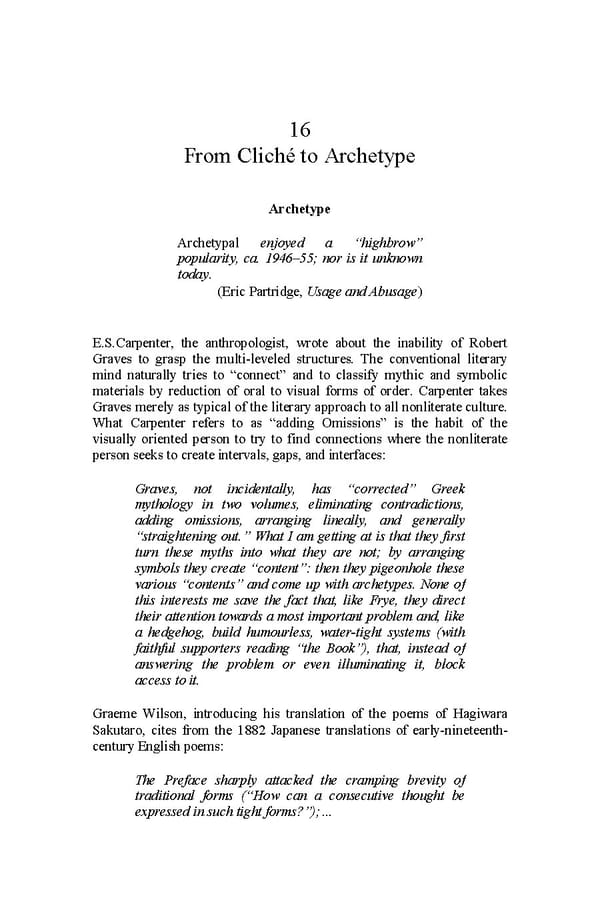16 From Cliché to Archetype Archetype Archetypal enjoyed a “highbrow” popularity, ca. 1946–55; nor is it unknown today. (Eric Partridge, Usage and Abusage) E.S.Carpenter, the anthropologist, wrote about the inability of Robert Graves to grasp the multi-leveled structures. The conventional literary mind naturally tries to “connect” and to classify mythic and symbolic materials by reduction of oral to visual forms of order. Carpenter takes Graves merely as typical of the literary approach to all nonliterate culture. What Carpenter refers to as “adding Omissions” is the habit of the visually oriented person to try to find connections where the nonliterate person seeks to create intervals, gaps, and interfaces: Graves, not incidentally, has “corrected” Greek mythology in two volumes, eliminating contradictions, adding omissions, arranging lineally, and generally “straightening out.” What I am getting at is that they first turn these myths into what they are not; by arranging symbols they create “content”: then they pigeonhole these various “contents” and come up with archetypes. None of this interests me save the fact that, like Frye, they direct their attention towards a most important problem and, like a hedgehog, build humourless, water-tight systems (with faithful supporters reading “the Book”), that, instead of answering the problem or even illuminating it, block access to it. Graeme Wilson, introducing his translation of the poems of Hagiwara Sakutaro, cites from the 1882 Japanese translations of early-nineteenth- century English poems: The Preface sharply attacked the cramping brevity of traditional forms (“How can a consecutive thought be expressed in such tight forms?”);…
 Essential McLuhan Page 314 Page 316
Essential McLuhan Page 314 Page 316